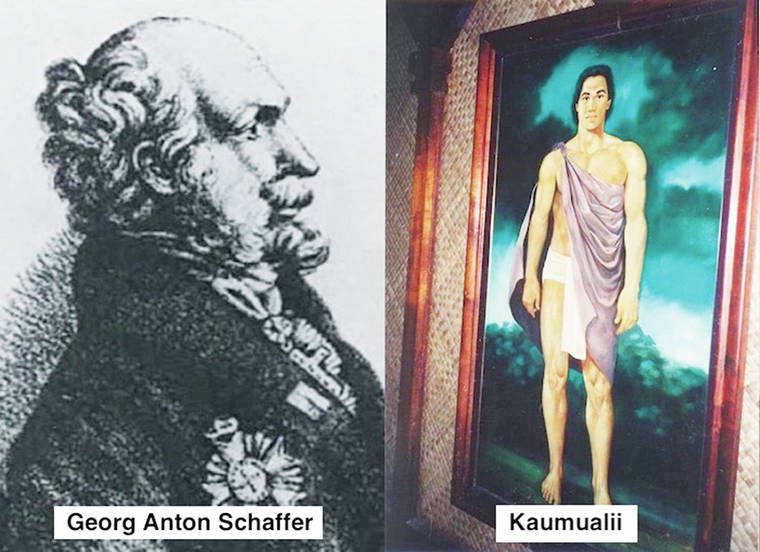From the 1790s until 1830, sandalwood – the fragrant wood of the iliahi tree – was exchanged by Hawaiian chiefs for foreign goods offered by New England traders, who then shipped it to Canton, China, where they sold it for profit to Chinese merchants, who fashioned it for sale into boxes and chests, or sold it as medicine, perfume, or incense.
From the 1790s until 1830, sandalwood – the fragrant wood of the iliahi tree – was exchanged by Hawaiian chiefs for foreign goods offered by New England traders, who then shipped it to Canton, China, where they sold it for profit to Chinese merchants, who fashioned it for sale into boxes and chests, or sold it as medicine, perfume, or incense.
On Kauai, Kaumualii commanded ordinary Hawaiians to cut iliahi trees, haul the wood to shore and load it aboard ships, so that roughly between 1814 and 1821, large forests of iliahi were felled and uprooted, while many commoners, having neglected their farms, were forced to eat herbs and ferns and died.
In May of 1816, while the sandalwood trade flourished, German adventurer Georg Anton Schaffer arrived at Waimea to salvage the cargo of the Russian ship “Bering,” shipwrecked at Waimea in January 1815.
After the salvage business was disposed of, Kaumualii, resentful of Kamehameha’s lordship over him, made a proposition to Schaffer to the effect that if Schaffer, with Russia’s backing, would assist him in restoring his full sovereignty over of Kauai and Niihau, and help him gain control over Oahu, Maui, Lanai, and Molokai as well, then Kaumualii would grant Schaffer trading privileges, property, and most incredibly, he would pledge allegiance (on paper at least) to the Russian Empire.
Schaffer, being the mountebank he actually was – and without the authorization of the Russian government – then deceived Kaumualii by pledging to provide him with a Russian warship and the protection and aid of the Russian Empire in a war of conquest against Kamehameha.
Kaumualii’s subjects then began cutting sandalwood for Schaffer and piling lava rocks at Waimea for a Russian Fort, which stands today as testimony to their alliance, and Schaffer continued to enjoy royal treatment until May 1817, when Kaumualii finally learned that Schaffer’s part of the bargain was not endorsed by the Russian government.
He then confronted Schaffer at Waimea with about 1,000 of his subjects and ordered Schaffer hauled off onto a boat with a warning not to return.
•••
Hank Soboleski has been a resident of Kauai since the 1960s. Hank’s love of the island and its history has inspired him, in conjunction with The Garden Island Newspaper, to share the island’s history weekly. The collection of these articles can be found here: https://bit.ly/2IfbxL9 and here https://bit.ly/2STw9gi Hank can be reached at hssgms@gmail.com


